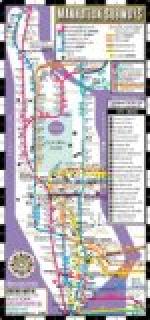[Sidenote: Power House]
The power house is fully described elsewhere in this publication, but it is not inappropriate to refer briefly in this place to certain considerations governing the selection of the generating unit, and the use of engines rather than steam turbines.
[Illustration: OIL SWITCHES—MAIN POWER STATION]
The 5,000-kilowatt generating unit was chosen because it is practically as large a unit of the direct-connected type as can be constructed by the engine builders unless more than two bearings be used—an alternative deemed inadvisable by the engineers of the company. The adoption of a smaller unit would be less economical of floor space and would tend to produce extreme complication in so large an installation, and, in view of the rapid changes in load which in urban railway service of this character occur in the morning and again late in the afternoon, would be extremely difficult to operate.
The experience of the Manhattan plant has shown, as was anticipated in the installation of less output than this, the alternators must be put in service at intervals of twenty minutes to meet the load upon the station while it is rising to the maximum attained during rush hours.
After careful consideration of the possible use of steam turbines as prime-movers to drive the alternators, the company’s engineers decided in favor of reciprocating engines. This decision was made three years ago and, while the steam turbine since that time has made material progress, those responsible for the decision are confirmed in their opinion that it was wise.
[Illustration: PART OF BUS BAR COMPARTMENTS—MAIN POWER STATION]
[Sidenote: Alternators]
The alternators closely resemble those installed by the Manhattan Railway Company (now the Manhattan division of the Interborough Rapid Transit Company) in its plant on the East River, between 74th Street and 75th Street. They differ, however, in having the stationary armature divided into seven castings instead of six, and in respect to details of the armature winding. They are three-phase machines, delivering twenty-five cycle alternating currents at an effective potential of 11,000 volts. They are 42 feet in height, the diameter of the revolving part is 32 feet, its weight, 332,000 pounds, and the aggregate weight of the machine, 889,000 pounds. The design of the engine dynamo unit eliminates the auxiliary fly wheel generally used in the construction of large direct-connected units prior to the erection of the Manhattan plant, the weight and dimensions of the revolving alternator field being such with reference to the turning moment of the engine as to secure close uniformity of rotation, while at the same time this construction results in narrowing the engine and reducing the engine shafts between bearings.
[Illustration: REAR VIEW OF BUS BAR COMPARTMENTS—MAIN POWER STATION]




